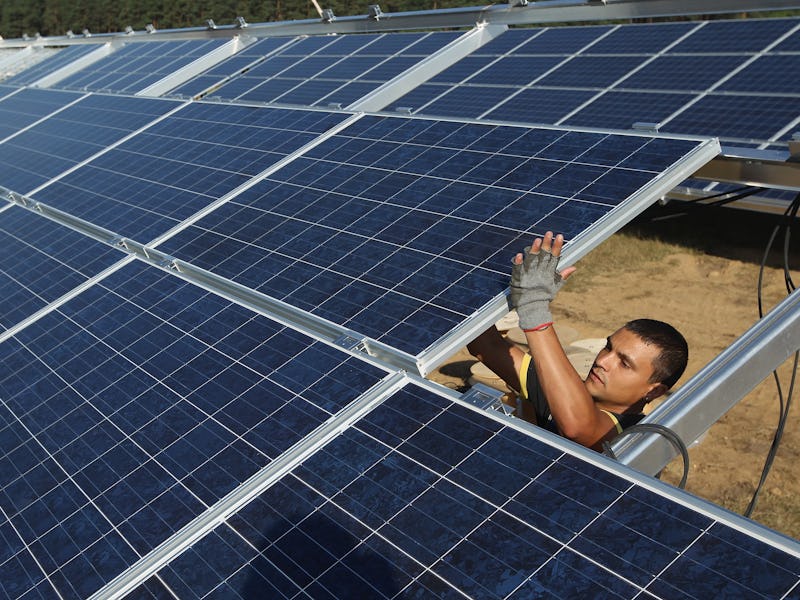Report Shows Solar Prices Have Already Dropped to 2020 Goals
This could be good news for your future energy bill.

Solar power has never been cheaper, making it possible for this once alternative energy to power the future. Turns out the future is arriving ahead of schedule, as a new report from the Department of Energy reveals the cost of solar power has hit its 2020 goal three years early.
The Department of Energy has found utility-grade solar panels have hit a median price of about one dollar per watt and $0.06 per kilowatt-hour. That price hits a milestone set by the department’s Sunshot Initiative in 2010 as part of a larger effort to make solar power competitive with other sources of energy.
The report attributes those gains to a bunch of factors. The photovoltaic tech that powers the panels has decreased in cost, there’s more market competition now than there was in 2010, and there have been a bunch of general improvements in solar tech’s efficiency. Labor costs of creating and installing this hardware have also decreased.
The cost of residential and commercial solar panels haven’t quite reached their 2020 goals, and the energy costs for, say, a solar roof on your house are still greater than tapping into a solar-powered grid. But those categories are about 85 percent of the way to their targets with three years left, so they are well on their way.
Solar costs are falling in a big way.
Soft costs like sales tax and overhead remain the most expensive factor in going solar at home. Within the next three years, the Department of Energy plans to cut those specific costs in half.
“We definitely want to reduce red tape to promote economic growth,” Daniel Simmons, acting assistant secretary of the Energy Department’s Office of Energy Efficiency and Renewable Energy, told Bloomberg BNA.
And getting the cost of utility-scale solar down makes the biggest difference overall: A new report from the Solar Energy Industries Association notes that utility-scale solar installations accounted for nearly 60 percent of photovoltaic panels installed last quarter.
Now that these goals have been accomplished, the Department of Energy will set goals for 2030 that will focus more heavily on reliability of solar grids rather than the cost, though it’s still also hoped the cost will be cut in half to just three cents per kilowatt-hour for utility-scale solar.